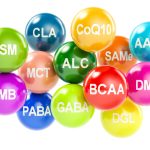Triglycerides are a type of fat (lipid) found in your blood. They are the most common form of fat in the body and serve as a significant source of energy.
Here’s an overview of what triglycerides are and their role in the body:
Structure:
- Molecular Composition: A triglyceride molecule consists of three fatty acids attached to a glycerol backbone. This structure allows them to store a large amount of energy in a compact form.
Function:
- Energy Storage: Triglycerides store excess calories from food in adipose (fat) tissue. When the body needs energy between meals, it releases these stored triglycerides to be used as fuel.
- Insulation and Protection: Fat tissue, which is composed largely of triglycerides, helps insulate the body and protect organs from physical shock.
- Energy Transport: Triglycerides circulate in the blood to transport energy to various parts of the body. They are carried by lipoproteins, such as very low-density lipoproteins (VLDL) and chylomicrons.
Sources:
- Dietary Intake: Triglycerides are obtained from dietary fats found in foods such as oils, butter, and animal fats. The body also synthesizes triglycerides from excess carbohydrates and sugars consumed in the diet.
- Endogenous Production: The liver can produce triglycerides from other nutrients, particularly carbohydrates.
Health Implications:
- Normal Levels: Triglycerides are essential for health, but they need to be maintained at optimal levels. Normal fasting blood triglyceride levels are generally below 150 milligrams per deciliter (mg/dL).
- High Levels (Hypertriglyceridemia): Elevated triglyceride levels (above 150 mg/dL) can increase the risk of cardiovascular diseases, such as coronary artery disease and stroke. High levels are often associated with other conditions like obesity, type 2 diabetes, and metabolic syndrome.
- Low Levels: While less common, low triglyceride levels can indicate issues such as malnutrition or hyperthyroidism.
Factors Affecting Triglyceride Levels:
- Diet: High intake of carbohydrates, sugars, and unhealthy fats can raise triglyceride levels. Conversely, consuming healthy fats, fiber, and lean proteins can help maintain normal levels.
- Physical Activity: Regular exercise helps lower triglyceride levels by promoting the use of triglycerides for energy.
- Weight Management: Maintaining a healthy weight reduces the risk of elevated triglycerides.
- Alcohol Consumption: Excessive alcohol intake can significantly raise triglyceride levels.
- Medications and Health Conditions: Certain medications and health conditions, such as hypothyroidism and kidney disease, can influence triglyceride levels.
Monitoring and Management:
- Regular Testing: Monitoring blood triglyceride levels through regular blood tests helps manage and prevent potential health risks.
- Lifestyle Changes: Adopting a healthy diet, exercising regularly, maintaining a healthy weight, and limiting alcohol consumption can help manage triglyceride levels.
- Medications: In some cases, doctors may prescribe medications, such as fibrates or omega-3 fatty acids, to help lower triglyceride levels.
Understanding triglycerides and their role in the body is essential for maintaining overall health and preventing cardiovascular diseases. Regular monitoring and adopting a healthy lifestyle are key to managing triglyceride levels effectively.
Triglyceride numbers, measured through a blood test called a lipid panel, indicate the amount of triglycerides in your blood. These numbers provide important information about your risk for cardiovascular diseases and overall metabolic health.
Here’s a breakdown of what different triglyceride levels mean:
Triglyceride Levels:
- Normal: Less than 150 mg/dL
- Indicates a healthy level of triglycerides, associated with a lower risk of heart disease and other metabolic conditions.
- Borderline High: 150 – 199 mg/dL
- Suggests a moderate risk for cardiovascular diseases. Lifestyle changes, such as improving diet and increasing physical activity, are recommended to lower levels.
- High: 200 – 499 mg/dL
- Indicates a significant risk for cardiovascular diseases and other conditions such as pancreatitis. More intensive lifestyle changes and possibly medications may be needed to reduce levels.
- Very High: 500 mg/dL or higher
- Poses a high risk for pancreatitis and serious cardiovascular diseases. Immediate medical intervention, including medications and strict lifestyle modifications, is necessary.
Factors Influencing Triglyceride Levels:
- Diet: High intake of sugars, refined carbohydrates, and unhealthy fats can increase triglyceride levels.
- Physical Activity: Regular exercise helps lower triglycerides by promoting their use as energy.
- Weight: Being overweight or obese is associated with higher triglyceride levels.
- Alcohol Consumption: Excessive drinking can raise triglyceride levels.
- Medical Conditions: Diabetes, hypothyroidism, and kidney disease can affect triglyceride levels.
- Medications: Some medications, such as steroids and beta-blockers, can influence triglyceride levels.
Implications of High Triglycerides:
- Cardiovascular Disease: High triglycerides are linked to an increased risk of heart attack, stroke, and atherosclerosis (hardening of the arteries).
- Metabolic Syndrome: Elevated triglycerides are a component of metabolic syndrome, which includes a cluster of conditions like high blood pressure, high blood sugar, and abdominal fat, increasing the risk of heart disease and diabetes.
- Pancreatitis: Extremely high triglyceride levels can cause inflammation of the pancreas, leading to severe abdominal pain and other complications.
Managing Triglyceride Levels:
- Dietary Changes: Reducing intake of sugars, refined carbohydrates, and saturated fats; increasing consumption of omega-3 fatty acids, fiber, and healthy fats.
- Exercise: Engaging in regular physical activity to help lower triglycerides.
- Weight Management: Achieving and maintaining a healthy weight.
- Alcohol Limitation: Reducing or eliminating alcohol consumption.
- Medications: In some cases, doctors may prescribe medications like fibrates, niacin, or omega-3 fatty acid supplements to help lower triglyceride levels.
Conclusion:
Triglyceride numbers provide crucial information about your metabolic and cardiovascular health. Understanding and managing these numbers through lifestyle changes and, when necessary, medical intervention can significantly reduce health risks and promote overall well-being. Regular monitoring and proactive management are key to maintaining healthy triglyceride levels.
READ MORE: The Complete Pro Metabolic Diet
Sources:
https://www.betterhealth.vic.gov.au/health/conditionsandtreatments/triglycerides
https://www.hopkinsmedicine.org/health/conditions-and-diseases/metabolic-syndrome#:~:text=Metabolic%20syndrome%20is%20a%20condition,and%20low%20HDL%20cholesterol%20levels.
https://www.nhlbi.nih.gov/health/high-blood-triglycerides#:~:text=Triglyceride%20levels%20usually%20fall%20into,200%20and%20499%20mg%2FdL









